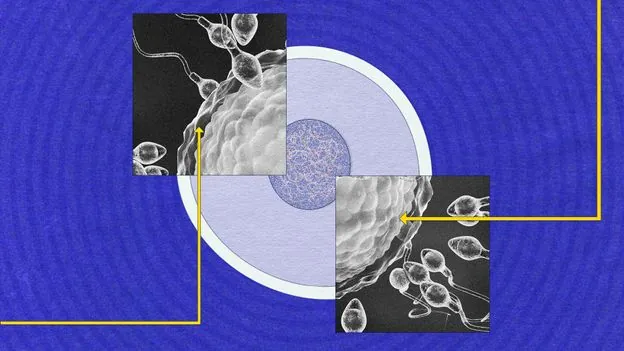
The Enigma of Sperm: Unveiling the Mysteries Behind Nature's Tiny Titans
2025-06-14
Author: Wei
How do sperm navigate their treacherous journey? What fuels their relentless quest for an egg? This tiny yet intricate cell remains one of nature's greatest mysteries, despite being known for over 350 years.
Every heartbeat allows a man to produce about 1,000 sperm, and during ejaculation, millions race to accomplish what many will never achieve: fertilizing an egg. Yet, the processes behind this epic race are still puzzling scientists.
The Science of Sperm: A Historical Perspective
Sperm cells, or spermatozoa, are unlike any other cells on the planet. Dr. Sarah Martins da Silva of the University of Dundee highlights that their energy management and metabolism differ significantly from typical cells, making them uniquely specialized. Fascinating research is now unearthing the secrets of sperm, examining their development from testes to the moment they reach the egg.
Sperm cells undergo dramatic transformations, evolving from simple round cells into highly specialized cells with distinctive heads and tails. Adam Watkins, a reproductive physiologist, explains, "No other body cell changes form in such a unique way." It takes about nine weeks for sperm to mature, and the truly fortunate few get to embark on their perilous journey.
A Journey of Millions, but Only One Winner
After being released, sperm propel themselves using their flagella, or tails, while competing against millions of others. Surprisingly, how they swim is still poorly understood. Recent studies at the University of Bristol reveal that they might follow patterns akin to those explored by World War II codebreaker Alan Turing, propelling themselves in a way that has far-reaching implications for understanding male fertility.
Unlocking the Secrets of Fertilization
But what ultimately guides sperm to the egg? While some believe they may sense chemical signals released by the egg, the specifics of this navigation process remain largely unexplored. Once a sperm reaches the egg, it faces formidable barriers, including multiple protective layers that it must breach utilizing enzymes in its acrosome. The actual mechanics behind this penetration remain an exciting mystery.
The Evolutionary Race: Male vs. Female
Scott Pitnick, a biologist from Syracuse University, emphasizes that sperm have evolved rapidly, influenced heavily by evolving female reproductive tracts. There's a need to reconsider the sexual selection framework—we often focus on male traits, but females play an equally crucial role in shaping sperm development. This perspective might explain why certain species have evolved highly diverse sperm traits.
The Dwindling Future of Sperm Health
In a world where reproductive health faces new challenges, alarming trends show sperm counts are declining globally—one in six adults now experiences infertility, often tied to male factors. Pollution, lifestyle choices, and even genetic intricacies may hinder sperm health, complicating the quest for parenthood. Experts like Hannah Morgan are now examining what goes on inside sperm to strategize better approaches for tackling male infertility.
As researchers press onward, the quest to unravel the mysteries of sperm—nature’s smallest yet most complex warriors—continues, revealing not just the secrets of fertilization but potential clues to combating infertility in our modern world.



 Brasil (PT)
Brasil (PT)
 Canada (EN)
Canada (EN)
 Chile (ES)
Chile (ES)
 Česko (CS)
Česko (CS)
 대한민국 (KO)
대한민국 (KO)
 España (ES)
España (ES)
 France (FR)
France (FR)
 Hong Kong (EN)
Hong Kong (EN)
 Italia (IT)
Italia (IT)
 日本 (JA)
日本 (JA)
 Magyarország (HU)
Magyarország (HU)
 Norge (NO)
Norge (NO)
 Polska (PL)
Polska (PL)
 Schweiz (DE)
Schweiz (DE)
 Singapore (EN)
Singapore (EN)
 Sverige (SV)
Sverige (SV)
 Suomi (FI)
Suomi (FI)
 Türkiye (TR)
Türkiye (TR)
 الإمارات العربية المتحدة (AR)
الإمارات العربية المتحدة (AR)